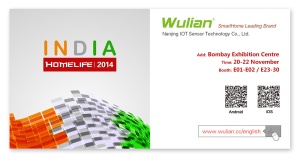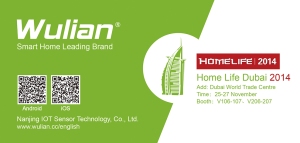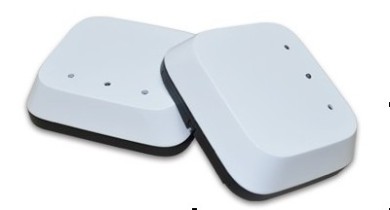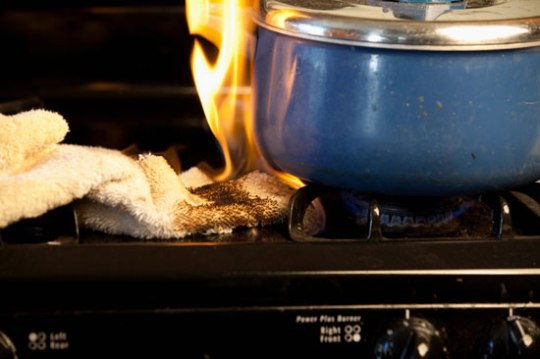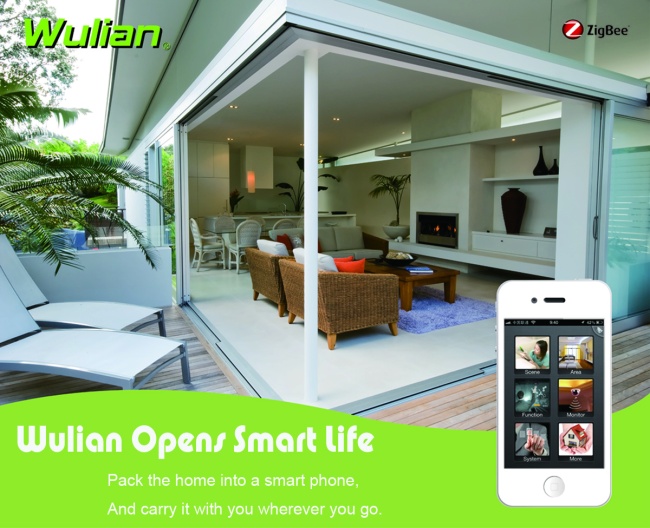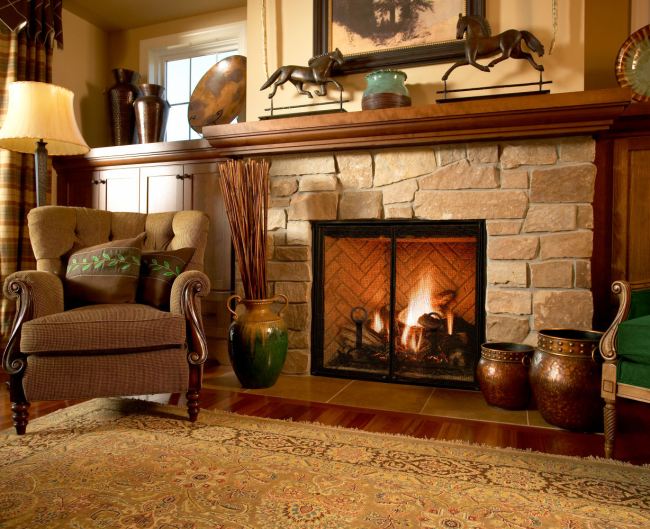ZigBee: Problem child or future success?
While successful wireless standards such as IEEE802.11x, GSM and Bluetooth, have been relatively easy to sell, bringing standardisation into the realms of more straightforward, low data rate, communications is significantly tougher. Within this environment, the efforts of the ZigBee Alliance to standardise network and application-support layers has, arguably, failed to make a convincing impression. Does ZigBee have a future?
The nature of RF design and the mentality of the typical RF design engineer being what it is, means there will invariably be a proprietary system that offers a better fit for a particular application. However, the attractions of standardisation for low data rate communications remain compelling. Chief among these being potential economies of scale, reductions in time to market, and opportunities to establish widespread ad-hoc interoperability.
ZigBee capabilities and opportunities
The ZigBee protocol is widely viewed as a companion to WiFi and Bluetooth, operating in the same 2.4GHz unlicensed radio spectrum and slotting-in neatly below Bluetooth in the power/data rate continuum. ZigBee also specifies the lower-frequency 915MHz and 868MHz unlicensed bands available in the Americas and Europe respectively. At 2.4GHZ, ZigBee provides 16 channels and supports a maximum data rate of 250kbit/s.
The standard is managed by the ZigBee Alliance, and takes advantage of the established IEEE802.15.4 PHY and MAC layers. 802.15.4 provides a convenient and robust radio specification, delivering benefits such as a straightforward power management strategy comprising fully operational and stand-by modes only. This provides the basis for very long battery lifetimes, which can be up to several years, while at the same time simplifying application design.
Yet some may view ZigBee as a problem child
Currently, the majority of anticipated applications are in domestic controls and utility metering, as well as industrial, scientific and medical (ISM) equipment. To penetrate these applications, however, it must entice product developers away from the RF designs and supporting knowledge and IP embedded in existing products.
For example, a wireless key fob for a vehicle or garage door opener system may already be functioning satisfactorily using a proprietary standard in the 868MHz or 433MHz band. Migrating this to ZigBee would be a significant undertaking, only considered for a significant improvement in the product, such as improving security or tamper-resistance.
Developing with ZigBee and rivals
The ZigBee Alliance has defined standards from the network layer to the application support layer, which combine with the 802.15.4 lower layers to provide a complete wireless stack.
Semiconductor vendors such as Microchip, Atmel and Freescale have introduced complete modules for ZigBee development, comprising the 802.15.4 radio and ZigBee upper layers and integrating the microcontroller for ZigBee firmware and application hosting.
Using these modules, engineers are able to complete functioning designs without specialist design skills such as RF matching and board layout. Development boards supporting these modules provide a kick-start for application development. In fact, Meshnetics, which provides software development kits supporting hardware platforms from a number of vendors, claims a ZigBee network can be set up for evaluation within one hour.
But there are many other modules on offer to designers that provide the convenience of turnkey RF hardware design and an approved radio specification. Designers using 802.15.4 radio modules, for example, are free to use alternative upper layers, and the vendors of ZigBee modules provide the flexibility for designers to make their own choices. On the other hand, some silicon vendors offer complete transceiver modules based on proprietary radio specifications that are pre-approved to acceptance criteria in international territories.
The absence of any license fee is a major advantage to designers using proprietary products but, on the other hand, greater economies of scale may be available with a ZigBee-based system.
ZigBee strengths
As a managed standard designed to provide robust security features, allow large numbers of nodes, and support interoperability and vendor independence, ZigBee has convincing arguments in its favour.
It also embodies features that enable outstanding performance at relatively low power consumption. For example, support for multi-hop communications and flexible routing enable effective transmission distances to be extended beyond the single hop range of the 802.15.4 radio standard without resorting to increasing transmitter power.
Where the typical single-hop range is around 30m – but may be between 10m and 100m depending on environmental conditions, antenna performance and operating frequency band – the cumulative range of a ZigBee node can be extended to hundreds, or even thousands, of metres.
In addition, by supporting data rates up to 250kbit/s, when operated in the 2.4GHz band, ZigBee can deliver additional savings in transmitter power compared to networks using slower protocols.
In sensor networks, for example, where data collection rates may be comfortably inside this capability, ZigBee’s ability to complete data transactions quickly allows the transmitter to be powered off for longer periods. Since the power dissipated by the transmitter is largely independent of its operating speed, ZigBee delivers power savings by reducing the average energy per bit.
Compared with some proprietary systems, using a proven ZigBee module also helps with type approvals. The module vendor will already have overcome the majority of compliance hurdles, which effectively short-cuts a significant part of the approvals process. Alternatively, a significant number of proprietary offerings also carry relevant approvals.
An Achilles heel?
Designers, therefore, have a number of choices when selecting a platform for low data rate networking over long distances. The trend towards delivering the radio module as a complete module is quite commonplace among proprietary, non-ZigBee systems, as well as within the ZigBee environmen t. Although ZigBee is not the only system emphasising ease of design, the licensing structure maintained by the ZigBee Alliance adds to the cost of entry for ZigBee development.
Catalysts over the horizon
On the whole, ZigBee faces a tougher challenge to gain adherents than either Bluetooth or WiFi. Potential markets are diverse and also tend to be of lower total value. A number of well-established products are already in place, even though these do not offer the same potential for ubiquitous ad hoc interoperability. Moreover, the associated license fees remain relatively high.
It is worth remembering that the future of Bluetooth was in doubt for some time, until governments imposed legislation on the use of mobile phones in cars and in so doing kick-started the market for Bluetooth headsets. It is hard to imagine a likely legislative catalyst for ZigBee and a ‘killer application’ to drive mass adoption seems unlikely, taking into account the characteristics of ISM markets.
On the other hand, the standard is now widely understood, development platforms and silicon are readily available, and demand for wirelessly networked products in consumer and professional fields continue to grow strongly. If there are sound technical justifications for ZigBee, reducing the cost of entry may be sufficient to secure a successful future.
For more, contact liuj@wulian.cc
Wulian smart home’s new launch: Wireless People Counter
In the competitive commercial market today, effective commercial administration has become an important factor for commercial marketing success and failure. Business mode has gradually moved from traditional passive waiting mode to market demand responding mode. Business administrators are required more based on this, they must make quick responses within the shortest period according to the slight change of the market and grasp market discipline all the time and predicate the tendency. Meanwhile, they must make market daily operating decision more scientific, creating comfortable shopping environment and enhancing rationality for human resources allocation on premise of saving business operation cost at maximum.
The most obvious feature of the market principle is buyers’ flow and flow directions. How to analyze people is flow and flow directions from time and space in a scientific and effective way? And how to make rapid operating decisions? These become indispensible key parts in marketing mode of the modern business and retail business. It plays a critical role in guiding consumers to allocate consumers resources reasonably and promote market competitiveness.
Function of IOT Wireless People Counter
1. Reasonable allocation for consumer resources according to the statistics on people flow status in each floor;
2. Estimate the rationality of the marketing and promotion strategies by comparing people flow in different periods;
3. Allocate property management, maintenance personnel and security staff in a more effective way according to the change of the people flow;
4. Regulate power and human resources in a reasonable way and control running costs for shopping mall according to the number of stranded peoples in it;
5. Enhance the efficiency for marketing and promotion according to the buy rate of the people flow;
You can also see all the data from your smart phone or computer, and what’s more, you can make a linkage, when the amount of people catch a certain level, the linked primary air system will open.
For more info please email me.
New life with Wulian smart home
As smart home leader, Wulian provides wireless ZigBee products for users which can DIY by themselves and create any life they want.
In the past, everything in your home is fragmentary, disordered and alone unit. TV, refrigerator, air-conditioner, DVD, and etc. They are not a whole part and only give you a simple function. For management all of them, host must cost much money and time.
The emergence of the wireless Internet of Things technology to the traditional smart appliances, smart home has brought new opportunities for the industry, which can be a variety of electrical home wireless very convenient organic organize themselves to form a complete system, which can seamless sense and integrity management. This previously unimaginable and great challenging applications using wireless Internet of Things technology connection becomes easy, convenient and very interesting. These applications not only improve the quality of life and, to a greater extent can be seen as one of the most basic needs of the modern family.
From the size of the industry, the number of household appliances far more than the sum of computers, mobile phones, if coupled with such as the Internet of Things Drawer Lock, intelligent switch like the wireless sensor, the controller, the number has been the traditional computer more than 100 times, more than 50 times of the mobile phone.It can be said more than just a wireless Internet of Things smart home market may be traditional Internet and mobile Internet sum of at least 20 times. From this perspective, the domestic market will be the most important market in the main Internet of Things, the size of the market is much larger than the intelligent transportation, the sum of the wisdom and power, wisdom, and environmental protection industry, and so on, To some extent, leave the smart home, the wisdom of the Earth will lose the basis for their existence. It can be said that the smart home will be the Internet of Things most mainstream applications market, it is no wonder that the global giants including Google put the future of the bet in the family.
The leading brand of wireless smart home as the Internet of Things, IOT sensing concern is not the traditional manufacturing process of upgrading, but the realization of wireless Internet of Things functional experience, so that more families can meet their overall perception of the object of concern,control and system management. As one of the global ZigBee Alliance members, we will strengthen the interaction with the members to discuss and promote the application of wireless technology in the home of Things.
It can be predicted that the next great company will be born in the area of Internet of Things, great applications will change mankind for thousands of years traditional home life.
More information you need. Please e-mail us directly.
Secure your kitchen by Wulian Smart Home
In our daily life,we often read such news,gas leak caused the fire or gas leak caused poisoning,there were a lot of tragedy. How to avoid?It is very important to every family. Wulian has a whole solution for kitchen security.
This is Automatic Manipulator and flammable gas detector,when gas leak ,three things will happen,firstly,your and your family members’ mobile phone will get a message of gas leak ,you can check at once. Secondly, the alarm of gas detector sounded. If any one at home,he will be noticed. Thirdly,the manipulator closed automatically. It is directly to prevent the disasters from the happening.
In additional,we can create a scene,for example,when we leave home,many devices we will be checked to ensure the safety of the family,but sometimes we have no time to check. Never mind,you can add all the devices which you should be checked into the scene,you just need to open your phone and click the picture of the scene,your home is automatically protected, including kitchen safety.
We can make a linkage to other devices,such as wireless fire detector,sound and light alarm. When the kitchen in case of danger,not only you and your family members immediately find,but also your neighbors,securities will find.
All of these products have a simple installation,connect the power supply or install batteries,and click the set key of gateway four times than click the function key of the products four times,they will be join in the ZigBee network,your kitchen will be very safety. Of cause,our products can be used in smart hotels, smart restaurants.
If you need more information you may email me direct.
What is Wulian Home Automation?
At 6:00 am, your heat turns on and warms the house to a comfortable level. At 6:30 am your bedroom shades open and a soothing voice bids you good morning. As you roll out of bed, last night’s headlines and sports scores are read to you along with today’s weather forecast. The bathroom lights flip on. As you climb into the shower, the coffee begins to brew downstairs. Another day begins…
Think of all the repetitive things you do in your home every day. Turn lights on, turn lights off, set thermostat up, set thermostat down, arm the security system, disarm the security system, water the lawn, etc… Now add to this all the things you have to remember to do. Pay the bills, change your oil, take your medication, pick the kids up from soccer, get the car inspected, etc… Wouldn’t it be great if you had a little help with all this? That’s what Wulian home automation is all about.
Albert Einstein minimized his wardrobe to avoid wasting time thinking about what to wear. Simplifying his life gave him more time and energy to focus on his work. Home automation works the same way. It simplifies your life by shifting the more mundane and tedious tasks from you to your home. With a ‘smarter’ home, you can focus more of your time and energy on the people and things that matter most to you.
All you need to do right now is to download Wulian home automation software from App store or Google Play with Wulian.cc or Wulian smart home. And more information you want to get is to write us e-mail.
How to achieve a comfortable indoor climate regardless of outside weather change?
Lots of cities in the world, such as London, have a very famous reputation of being chilly. But just as the fog may roll, the sun can indeed shine, too. For one lucky London home, the family members stay happy year-round while the home itself does all its adjusting automatically.
Gretchen’s home installed Wulian’s home automation system one year ago. They loaded the residence with smart-home essentials like lighting control, entertainment, data networking, shades, security, and remote access control. But this system also boasts features specifically added to keep the climate as comfortable as possible, no matter how cold—or hot—it may be outside. Naturally, the home’s heating and cooling systems are integrated into the Wulian smart home system. But a few fancy flourishes go beyond the basics when it comes to keeping comfortable. In the main living space, a modern fireplace sits in a partial wall between the living room and a family room. Any time the weather gets a bit chilly, any family member can crank up the gas fireplace using their Wulian smart home system. Instant inferno. And what if that center star of the solar system decides to make an appearance? On the back patio, a large mechanical awning expands and retracts on command, adding a Shangri-la of shade at a moment’s notice. Very cool, indeed.
More info, contact liuj@wulian.cc for inquiry.
Look after aging parents remotely with Wulian’s smart home solution
How could children perform their duty of looking after aging parents when they are not around? Studying abroad, working oversea, or taking business trips a lot, all these things create difficulties in attending to elderly family members. But it’s no longer a problem now, thanks to home automation! Wulian Smart Home brings the most thoughtful solutions for people who need to take care of their parents remotely. Take a look at what functions you can achieve by Wulian’s assistance.
Smart parking system will reach nearly $360 million in annual revenue by 2020
The parking industry is being transformed by new technologies that are increasing operational efficiency and raising customer expectations, especially the ZigBee wireless tech. At the same time, even more profound changes are being driven by new perspectives on the role of parking within cities,as city officials look to use smart parking technologies to help manage parking as a resource within their sustainable mobility strategies, According to a recent report, worldwide revenue from smart parking systems will reach $356.5 million annually by 2020.
And people will also get benefit from it. Now there are many companies are developing the smart parking system. What’s the trend ? Wulian developed a wireless smart parking system. You can check and book from your smart phone. For example, when you are going to a hotel, you can check whether there is a position to park, if have, you can book from your smart phone,and the smart parking lock will stand , and others can not park on your position. when you are arriving the park, the Gateway will open automatically and no need to take the card . when your car parks the position, the parking sensor will detect and the linked parking lock will close, if it’s night, the lights around will brighter at that time, and when you are leaving, the light around you will become darker.. and you can check the situation of the car any time. If somebody drive your car, you will receive an alarm message at once.
More you can email me or visit.
Wulian smart irrigation: just like Nest for the garden
It’s starting to feel like the Internet of Things (IoT) train is finally leaving the station, as more and more household appliances become Internet-connected with a smartphone app providing the User Interface/remote controller.
Taking cues from the same IoT playbook is Wulian Smart Home with its “cloud smart irrigation”. It’s set out to bring the garden sprinkler kicking and screaming into the Internet age, replacing what is either a “dumb” device or one that, whilst Internet-connected, is crippled by a clunky User Experience.
Current irrigation controllers are outdated, extremely unintuitive and frustrating to use. Wulian’s irrigation system is connected to weather data, so when it rains the controller will stop watering without a manual shut-off. And when you have a sunnier day than expected, the controller will automatically water plants according to soil’s humidity without being turn on by people”.
Apart from toilsome manual operation, traditional irrigation also brings too much water wastage in the process. And in turn, unnecessary expense. To solve this problem, Wulian smart irrigation, via its cloud-connectivity, is powered by location-based weather data. In addition, and taking a page straight out of Nest’s book, it’s self-learning, resulting in a claimed “up to 50%” reduction in water consumption.
Since the advent of the smartphone, home automation technology is booming indoors and accessible to the masses. The same need for automation exists in the yard. Therefore, Wulian develops a simple App supporting both IOS and Android to realize a remote control and scheduling. It also learns and improves over time, conserves water, saves money.
